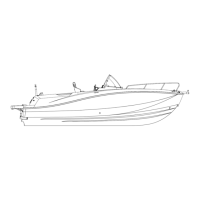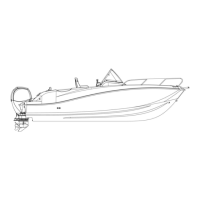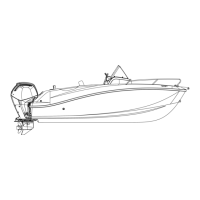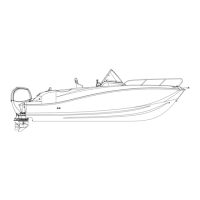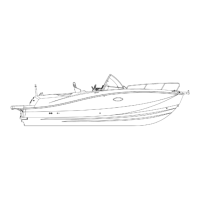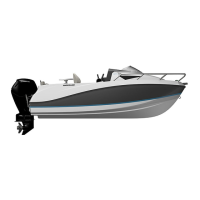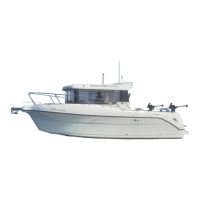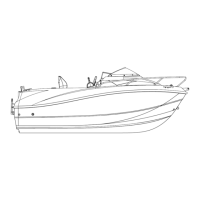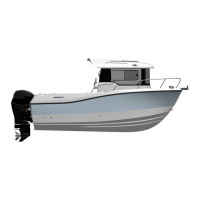14
Quicksilver 505OP — System & Component Overview and Operaon
The use of fuels containing ethanol higher than 10 percent
(E-10) can damage your engine and/ or fuel system and will
void the warranty.
E85 FUELS COULD SERIOUSLY DAMAGE YOUR ENGINE AND
MUST NEVER BE USED.
Typical Bilge Pump System
Bilge pump
Bilge pump hose
Thru hull
Storage
Long periods of storage and/or non-use, common to boats, create unique problems. When preparing
to store a boat for extended periods, disconnect the fuel line.
REFER TO THE ENGINE MANUFACTURER’S MANUAL IN YOUR OWNER’S MANUAL PACKAGE FOR
COMPLETE INSTRUCTIONS AND WARRANTY INFORMATION.
2. Bilge Pump
Your vessel is equipped with a single bilge pump located in the a secon of the boat. Access to the
bilge pump is via the motorwell access plate. The bilge pump is rated at 500 GPH, and is acvated
automacally by a built in mercury free oat switch when the water in the bilge reaches a
predetermined level. You can also manually operate the bilge pump at the console by pressing the
bilge pump switch at the helm.
Inspect the bilge pump intakes and keep them free of dirt or material which may impede the ow of
water through the pump. To clean the pump strainer, depress the lock tabs on both sides of the pump
and li the pump motor.
If water does not come out of the discharge hose:
1. Remove the motor module to see if the impeller rotates with the power on.
2. Remove any debris that may have accumulated in the nozzle secon or strainer base.
3. Check hose and connecon on hull side for debris and proper connecons.
Do not obstruct or modify the venlaon system.
If water ever entered the forward part of the bilge, the water can sll be evacuated by the bilge pump.
Located in the console, there is an inspecon plate, when removed, allows access to a drain plug. Simply
remove the drain plug in the PVC pipe to allow the water to drain a. Once all of the water has drained,
re-install the drain plug.
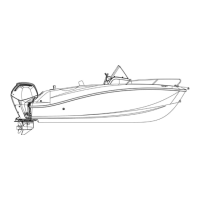
